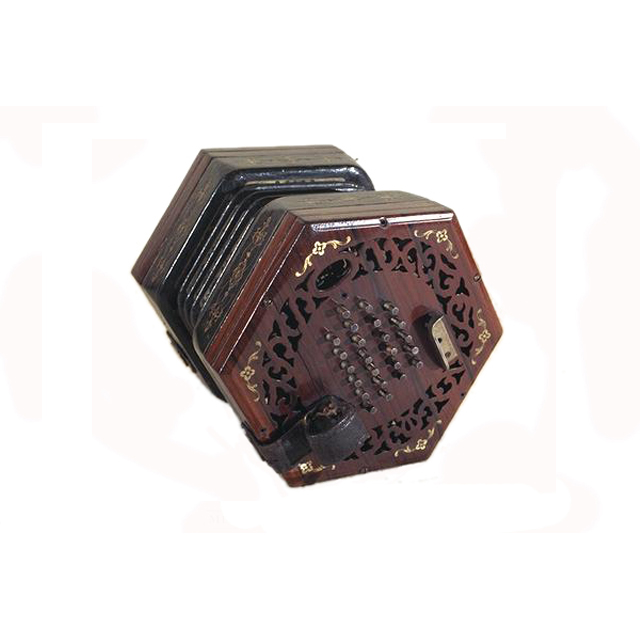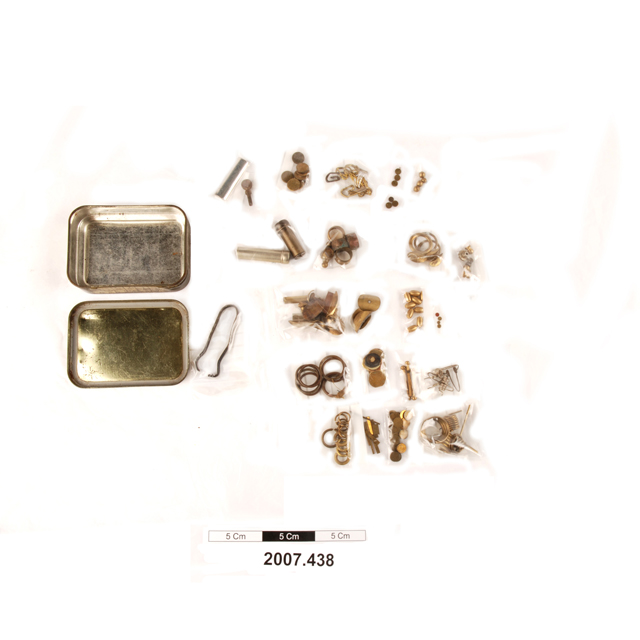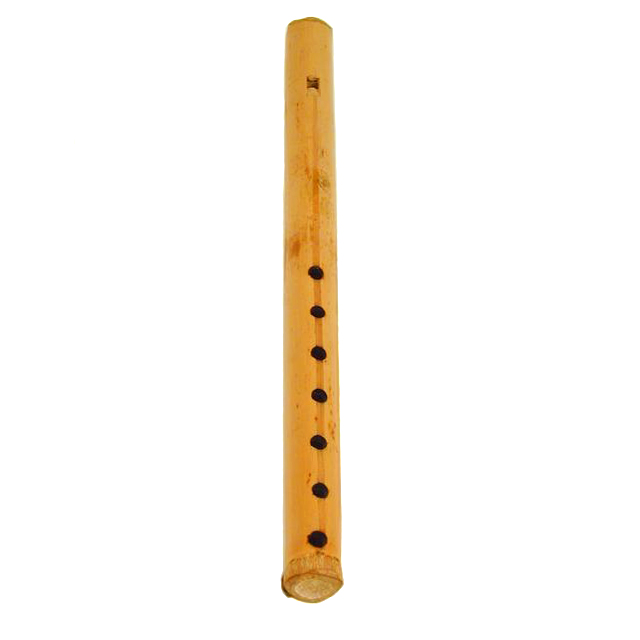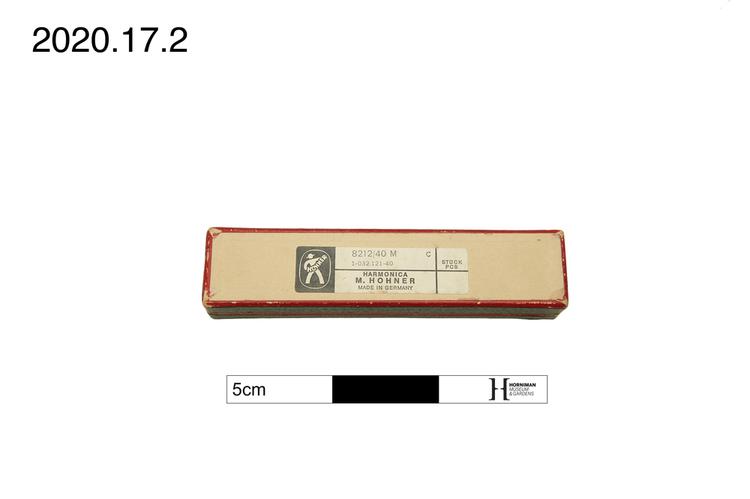
English system concertina. Serial number 6748. Printed on bellows: 'Wheatstone & Co. Inventors and Patentees, 20 Conduit St, London.' Circular pan label: 'Wheatstone & Co. Patentees, 20 Conduit St, Regent St, London.' 6.25 inches flat rosewood ends, fretwork with bevelled edges. 48 keys: 24 each side. Silver capped metal, bushed. Later Wheatstone black leather straps with nickel screws. Five-fold green leather bellows, fully gilt embossed, with fancy green and gold papers. Round-end steel reeds, fitted later. Later square hide leather case, with gold and black Wheatstone label in the lid with West St (post 1905) address.
In 1844, Charles Wheatstone (1802-1875) best known for his work in the field of physics, patented the 48-button English-system concertina. The instrument had already been in production for some years following his 1829 patent for the symphonium, a free reed mouth organ. A bellows-blown model was shown in an illustration accompanying the 1829 patent. The following information is recorded regarding the purchase of this instrument in the ledgers of the Wheatstone concertina factory (http://www.horniman.info): Purchase information from production ledger: 23 Oct 1855: S Smith Esq. [£]12.12 Paid (C1049, p.73). The concertina is classified according to the system of Hornbostel and Sachs as a 'set of free reeds, with flexible air reservoir and keyboard'.






